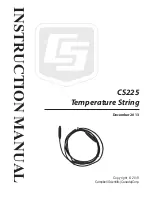
P a g e
|
10
./Install.sh
Afterwards, do a sudo reboot to reset the pi and script should be running on
boot up if everything was done correctly.
If there are issues, you can install the script manually by following the link provided
to HoolyHoo
’
s GitHub page and following the manual instruction on the second half of
his instruction.
4. Shoulder buttons -- optional:
Pads to connect your shoulder buttons are located on the back of the AIO
board, along the right side. If using a Glitch
’
d Gaming shoulder bracket, connecting
the 2 is very trivial. Connect the
“
R1
”
pad on the AIO to the
“
R
”
pinhole on the
shoulder board, the
“
L1
”
to the
“
L
”
, and then one
“
G
”
on the AIO to one
“
G
”
on the
shoulder. Both grounds do not need to be connected, only one ground connection is
necessary.
Figure 4
–
Shoulder Board
If you are using tactile switches, then simply connect one side of the switch to
L1 or R1 on the AIO, and the other side to a G pad on the AIO. Then do the same
thing with the other switch. It does not matter which side of the switch you connect
to G and which you connect to the signal pad, as the switch is just opening and closing
the connection. Make sure you know which pins on your switch are connected together
though, as 4 pin tactile switches are connected in pairs.
To connect 4 shoulder buttons, you will notice 2 points labeled
“
GPIO 10
”
and
“
GPIO 11
”
around the center of the board. These points are connected to the signals
for the
“
Z
”
and
“
C
”
buttons on the front. If you
aren’t
using a 6 button layout for
the front, you can use these signals to connect your extra shoulder buttons. Then
connect the other side of the shoulder buttons to any open ground points on the






























